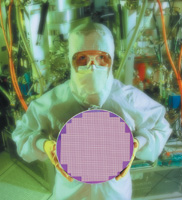Digital Capabilities; A Look Ahead
Photography is a wide-ranging
field that engenders passion in its practitioners, and like all great
forms of expression creates opinions formed through experience and reflection.
In its early days one of the great debates was: Is Photography Art?
This was the subject of many essays and heated discussions among players
and spectators. Today, issues such as film vs. digital, format choices,
the validity of computer generated images, photography as exploitation
or revealer, and even the merits of ink jet vs. silver prints cause
similar debate. We are opening this department up to readers, manufacturers,
and retailers--in short, everyone who lives and breathes photography
and who has an opinion about anything affecting imaging today. Digital cameras have undergone tremendous change in the past few years. But what you've seen so far is nothing compared to what's coming down the pike in the next several years. And, we're not just talking about a megapixel explosion. Think about what motor drives and through the lens metering did for 35mm photography, and then multiply that by a factor of 10. That's the scale of change you'll be seeing on the new digital cameras, and they will revolutionize the world of digital photography as we know it today. Darkroom, Photoshop,
And Intelligent Chipsets Improved Performance
Blurring The Lines,
Or Sharpening The Focus? Va-Va-Va-Video Look Mom, No Wires Perfecting The Package Dave Pahl is the Business Unit Manager for Digital Camera Solutions Business Unit at Texas Instruments. |
- Log in or register to post comments


































